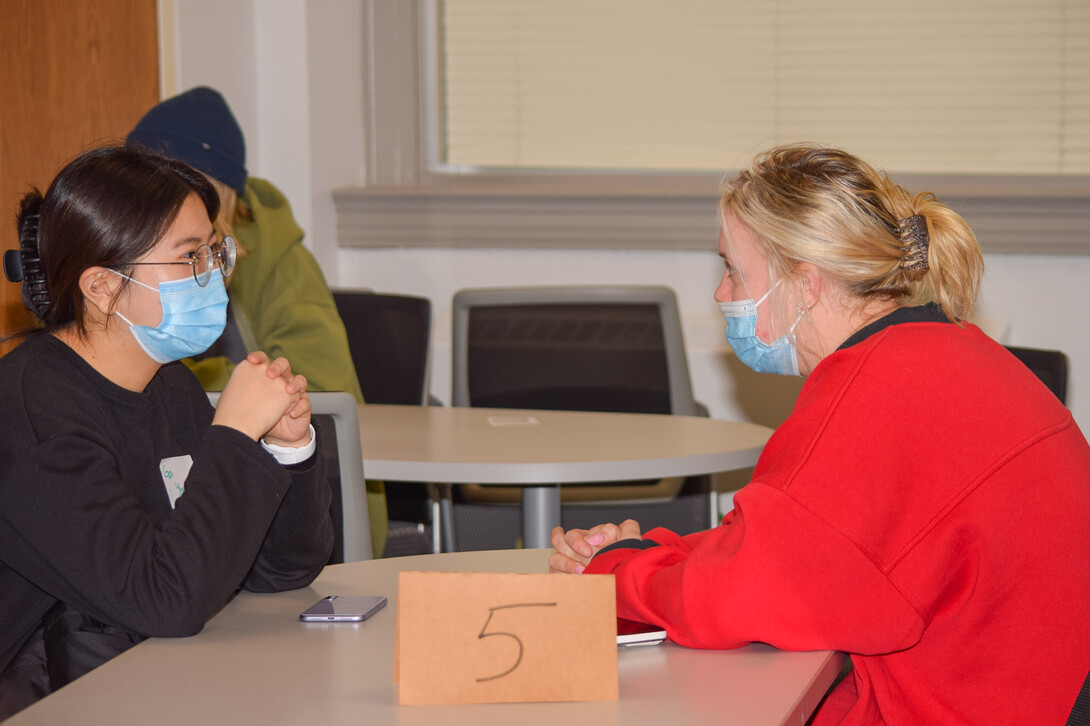
When Crystal Bock Thiessen stepped foot on campus in 2012 as a lecturer for Programs in English as a Second Language, she quickly noticed the the amount of diversity that the University of Nebraska-Lincoln represented. It was home to hundreds of international students from many countries.
However, something was missing — domestic and international students often sat side by side in class, and they often didn’t mingle with each other outside of class. University instructor Bock Thiessen admitted that cultural divides and unfamiliarity with aspects of intercultural communicative competences possibly widened the gap of potential friendship and meaningful relationships between these two groups on campus.
“Oftentimes domestic students see international students as insular,” Bock Thiessen said. “At the same time, international students often see domestic students as not interested in their culture or not wanting to speak to them.”
While the interaction among domestic and international students today is better than before, Bock Thiessen knew more could be done.
This spring, Bock Thiessen decided to take a step closer to her goal by integrating some of her Intensive English Program 74 English and Community Engagement sessions with other courses so her international multilingual English learners could more meaningfully connect with others across campus. She collaborated with various instructors from different departments, including COMM 311 Intercultural Communication taught by doctoral candidate Dakota Sanders, TEAC 330 Multicultural Education taught by Amanda Morales, and TEAC 813J Intercultural Communication led by Theresa Catalano.
During the Feb. 10 collaboration of IEP 74 and COMM 311, the first of four designed meetings over the spring semester, domestic and international students participated in round-table discussions in a “speed-dating” format. Each student learned about the other’s perspective by sharing where they grew up, their family traditions and the challenges they have living in Lincoln. After the shared class, the students were assigned to continue their conversations. They were partnered to continue talking with one another so domestic students could practice their intercultural communications while the IEP students practiced their language skills.
“These activities are very useful for me because they give me space to connect with other students at the university. It was an opportunity for me to form relationships with those who spoke English fluently,” said Moaz Ishag, IEP student from Sudan. “Although it is a great challenge for me in the skill of listening and speaking, it was a great chance to get ideas for all the cultures around the world.”
On Feb. 22 and Mar. 22, students from IEP 74, TEAC 813J and TEAC 330 worked together to learn about intercultural communication and art-based learning through theater and dance. Together, they had a chance to explore and share migration stories, cultural traditions and the challenges of overcoming microaggressions.
“What stood out to me the most was how the students who were still not comfortable in English took the lead and often were the most expressive,” said Catalano, associate professor of teaching, learning and teacher education. “Dance gave them away to be themselves — to showcase their knowledge — to communicate on the same level as their more English-proficient peers.”
The collaboration also prepared domestic students, like Katie Mahnken, who are studying to become teachers to better know how to work with culturally and linguistically diverse student bodies. When Mahnken connected with the IEP students, she learned about their perspectives of experiencing American culture for the first time and their home countries.
“I have always wanted to meet the international students on campus because I know there are a lot here, but I just don’t always know how to get involved or how to get connected with them, so I really appreciate the PIESL students,” Mahnken said.
International students can also learn about different facets of American culture from all domestic students who come from diverse backgrounds shaped by the geographical location of where they grew up and their journey to Nebraska, Bock Thiessen noted.
“When we collaborate and we bring classes together purposefully and for a sustained amount of time, we see that students enjoy speaking each other and learning from another,” Bock Thiessen said. “It’s a true cross-cultural exchange.”







